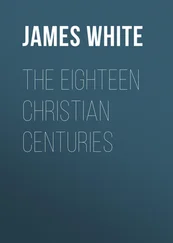James Walsh - The Thirteenth, Greatest of Centuries
Здесь есть возможность читать онлайн «James Walsh - The Thirteenth, Greatest of Centuries» — ознакомительный отрывок электронной книги совершенно бесплатно, а после прочтения отрывка купить полную версию. В некоторых случаях можно слушать аудио, скачать через торрент в формате fb2 и присутствует краткое содержание. Жанр: foreign_prose, История, foreign_edu, foreign_antique, на английском языке. Описание произведения, (предисловие) а так же отзывы посетителей доступны на портале библиотеки ЛибКат.
- Название:The Thirteenth, Greatest of Centuries
- Автор:
- Жанр:
- Год:неизвестен
- ISBN:нет данных
- Рейтинг книги:3 / 5. Голосов: 1
-
Избранное:Добавить в избранное
- Отзывы:
-
Ваша оценка:
- 60
- 1
- 2
- 3
- 4
- 5
The Thirteenth, Greatest of Centuries: краткое содержание, описание и аннотация
Предлагаем к чтению аннотацию, описание, краткое содержание или предисловие (зависит от того, что написал сам автор книги «The Thirteenth, Greatest of Centuries»). Если вы не нашли необходимую информацию о книге — напишите в комментариях, мы постараемся отыскать её.
The Thirteenth, Greatest of Centuries — читать онлайн ознакомительный отрывок
Ниже представлен текст книги, разбитый по страницам. Система сохранения места последней прочитанной страницы, позволяет с удобством читать онлайн бесплатно книгу «The Thirteenth, Greatest of Centuries», без необходимости каждый раз заново искать на чём Вы остановились. Поставьте закладку, и сможете в любой момент перейти на страницу, на которой закончили чтение.
Интервал:
Закладка:
It cannot be possible that these generations builded so much better than they knew, that it is only by a sort of happy accident that their edifices still continue to be the subject of such profound admiration, and such endless sources of pleasure after seven centuries of experience. If so we would certainly be glad to have some such happy accident occur in our generation, for we are building nothing at the present time with regard to which we have any such high hopes. Of course the generations of Cathedral builders knew and appreciated their own work. The triumph of the Thirteenth Century is therefore all the more marked and must be considered as directly due to the environment and the education of its people. We have then in the study of their Cathedrals the keynote for the modern appreciation of the character and the development of their builders.
It will be readily understood, how inevitably fragmentary must be our consideration of the Cathedrals, yet there is the consolation that they are the best known feature of Thirteenth Century achievement and that consequently all that will be necessary will be to point out the significance of their construction as the basis of the great movement of education and uplift in the century. Perhaps first a word is needed with regard to the varieties of Gothic in the different countries of Europe and what they meant in the period.
Probably, the most interesting feature of the history of Gothic architecture, at this period, is to be found in the circumstance that, while all of the countries erected Gothic structures along the general lines which had been laid down by its great inventors in the North and Center of France, none of the architects and builders of the century, in other countries, slavishly followed the French models. English Gothic is quite distinct from its French ancestor, and while it has defects it has beauties, that are all its own, and a simplicity and grandeur, well suited to the more rugged character of the people among whom it developed. Italian Gothic has less merits, perhaps, than any of the other forms of the art that developed in the different nations. In Italy, with its bright sunlight, there was less crying need for the window space, for the provision of which, in the darker northern countries, Gothic was invented, but, even here the possibilities of decorated architecture along certain lines were exhausted more fully than anywhere else, as might have been expected from the esthetic spirit of the Italians. German Gothic has less refinement than any of the other national forms, yet it is not lacking in a certain straightforward strength and simplicity of appearance, which recommends it. The Germans often violated the French canons of architecture, yet did not spoil the ultimate effect. St. Stephen's in Vienna has many defects, yet as a good architectural authority has declared it is the work of a poet, and looks it.
A recent paragraph with regard to Spanish Gothic in an article on Spain, by Havelock Ellis, illustrates the national qualities of this style very well. As much less is generally known about the special development of Gothic architecture in the Spanish peninsula, it has seemed worth while to quote it at some length:
"Moreover, there is no type of architecture which so admirably embodies the romantic spirit as Spanish Gothic. Such a statement implies no heresy against the supremacy of French Gothic. But the very qualities of harmony and balance of finely tempered reason, which make French Gothic so exquisitely satisfying, softened the combination of mysteriously grandiose splendor with detailed realism, in which lies the essence of Gothic as the manifestation of the romantic spirit. Spanish Gothic at once by its massiveness and extravagance and by its realistic naturalness, far more potently embodies the spirit of medieval life. It is less esthetically beautiful but it is more romantic. In Leon Cathedral, Spain possesses one of the very noblest and purest examples of French Gothic—a church which may almost be said to be the supreme type of the Gothic ideal, of a delicate house of glass finely poised between buttresses; but there is nothing Spanish about it. For the typical Gothic of Spain we must go to Toledo and Burgos, to Tarragona and Barcelona. Here we find the elements of stupendous size, of mysterious gloom, of grotesque and yet realistic energy, which are the dominant characters, alike of Spanish architecture and of medieval romance."
Those who think that the Gothic architecture came to a perfection all its own by a sort of wonderful manifestation of genius in a single generation, and then stayed there, are sadly mistaken. There was a constant development to be noted all during the Thirteenth Century. This development was always in the line of true improvement, while just after the century closed degeneration began, decoration became too important a consideration, parts were over-loaded with ornament, and the decadence of taste in Gothic architecture cannot escape the eye even of the most untutored. All during the Thirteenth Century the tendency was always to greater lightness and elegance. One is apt to think of these immense structures as manifestations of the power of man to overcome great engineering difficulties and to solve immense structural problems, rather than as representing opportunities for the expression of what was most beautiful and poetic in the intellectual aspirations of the generations. But this is what they were, and their architects were poets, for in the best sense of the etymology of the word they were creators. That their raw material was stone and mortar rather than words was only an accident of their environment. Each of the architects succeeded in expressing himself with wonderful individuality in his own work in each Cathedral.
The improvements introduced by the Thirteenth Century people into the architecture that came to them, were all of a very practical kind, and were never suggested for the sake of merely adding to opportunities for ornamentation. In this matter, skillful combinations of line and form were thought out and executed with wonderful success. At the beginning of the century, delicate shafts of marble, highly polished, were employed rather freely, but as these seldom carried weight, and were mainly ornamental in character, they were gradually eliminated, yet, without sacrificing any of the beauty of structure since combinations of light and shade were secured by the composition of various forms, and the use of delicately rounded mouldings alternated with hollows, so as to produce forcible effects in high light and deep shadow. In a word, these architects and builders, of the Thirteenth Century, set themselves the problem of building effectively, making every portion count in the building itself, and yet, securing ornamental effects out of actual structure such as no other set of architects have ever been able to surpass, and, probably, only the Greek architects of the Periclean period ever equaled. Needless to say, this is the very acme of success in architectural work, and it is for this reason that the generations of the after time have all gone back so lovingly to study the work of this period.
It might be thought, that while Gothic architecture was a great invention in its time and extremely suitable for ecclesiastical or even educational edifices of various kinds, its time of usefulness has passed and that men's widening experience in structural work, ever since, has carried him far away from it. As a matter of fact, most of our ecclesiastical buildings are still built on purely Gothic lines, and a definite effort is made, as a rule, to have the completed religious edifice combine a number of the best features of Thirteenth Century Gothic. With what success this has been accomplished can best be appreciated from the fact, that none of the modern structures attract anything like the attention of the old, and the Cathedrals of this early time still continue to be the best asset of the towns in which they are situated, because of the number of visitors they attract. Far from considering Gothic architecture outlived, architects still apply themselves to it with devotion because of the practical suggestions which it contains, and there are those of wide experience, who still continue to think it the most wonderful example of architectural development that has ever come, and even do not hesitate to foretell a great future for it.
Читать дальшеИнтервал:
Закладка:
Похожие книги на «The Thirteenth, Greatest of Centuries»
Представляем Вашему вниманию похожие книги на «The Thirteenth, Greatest of Centuries» списком для выбора. Мы отобрали схожую по названию и смыслу литературу в надежде предоставить читателям больше вариантов отыскать новые, интересные, ещё непрочитанные произведения.
Обсуждение, отзывы о книге «The Thirteenth, Greatest of Centuries» и просто собственные мнения читателей. Оставьте ваши комментарии, напишите, что Вы думаете о произведении, его смысле или главных героях. Укажите что конкретно понравилось, а что нет, и почему Вы так считаете.












